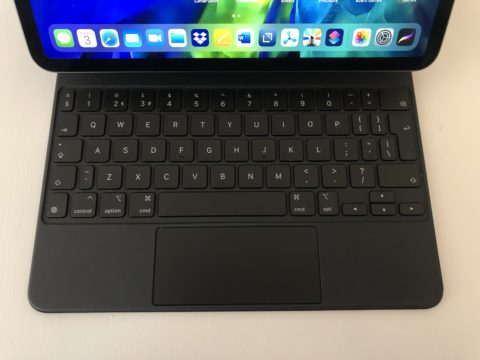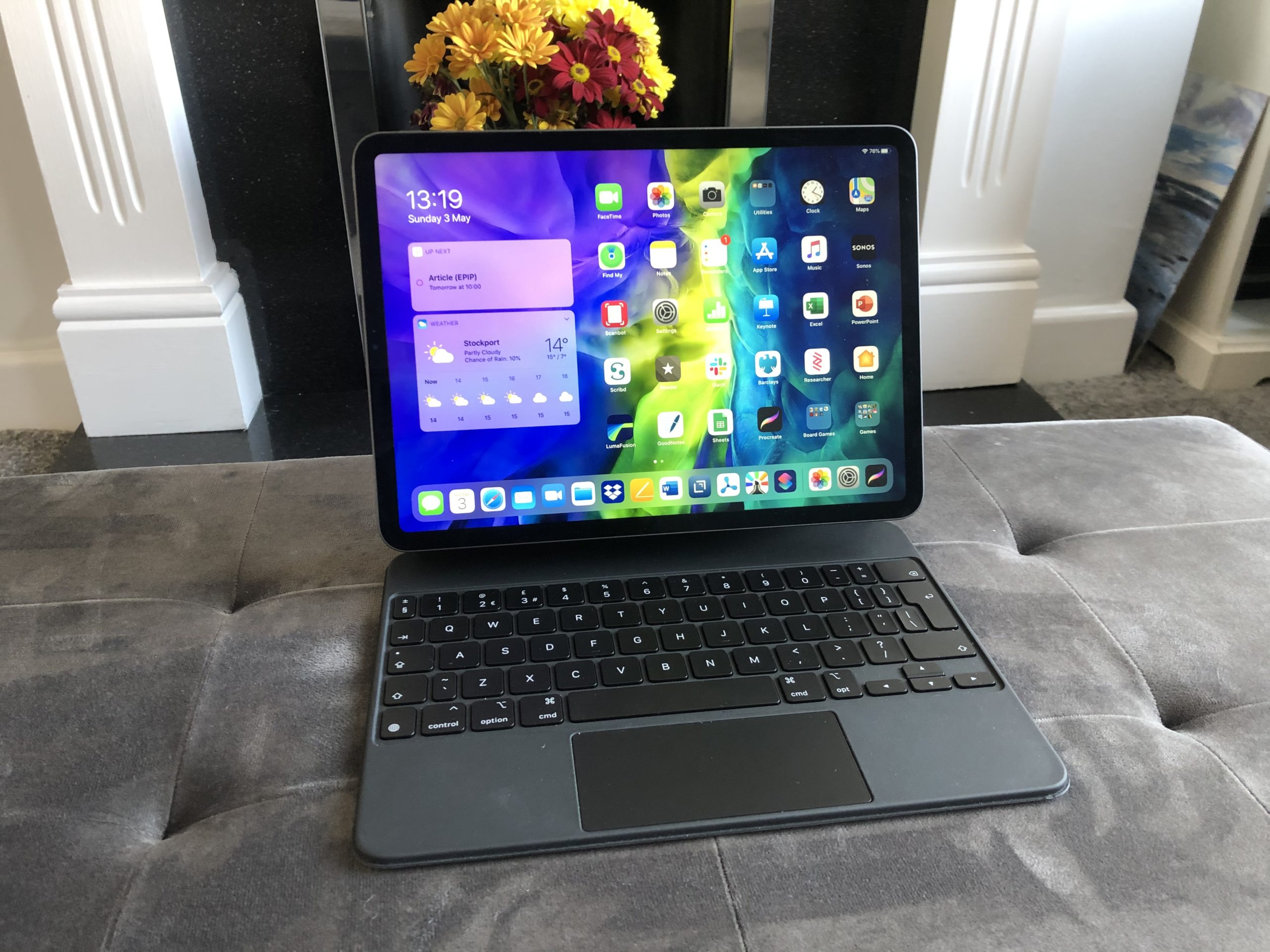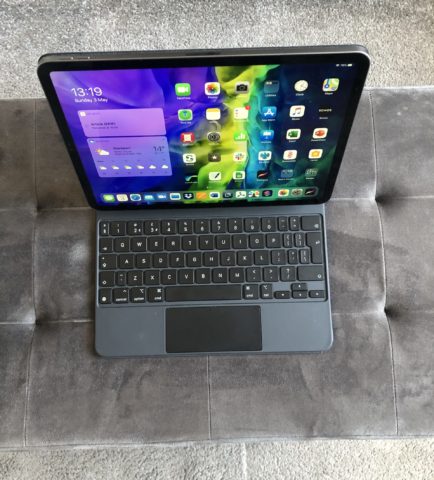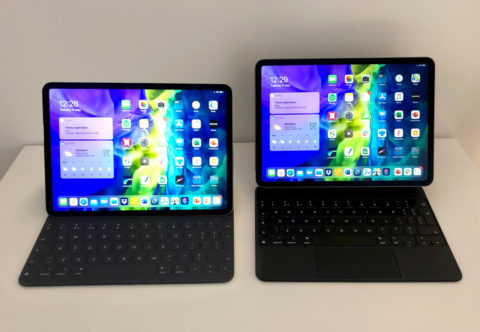Contributor Joe White gives his thoughts on Apple’s latest iPad accessory
Apple’s iPad Pro is a powerful device – so powerful that more people than ever are using it as their daily computer. But despite all that power, there are still many environments that really aren’t suited to a touch-based interface, and having a hardware keyboard sometimes attached to an iPad is something many users have opted for over the years – myself included.
Now, Apple’s brought us a premium keyboard for the iPad Pro – one that doesn’t just include backlit keys (hurrah!), but also an integrated trackpad. I’ve been using it for the last few days, and these are my first impressions.
A keyboard you can really love (at last)
Make no mistake, the typing experience on the Magic Keyboard is nothing short of excellent – and when you compare it with Apple’s previous effort, the Smart Keyboard Folio for iPad Pro, the difference is like night and day. The Magic Keyboard’s keys are quieter, more comfortable, and feel more like a well-built computer keyboard – even with the smaller 11-inch model.
While there isn’t a row of function keys on the new Magic Keyboard, this is far from a dealbreaker for me – physical volume keys on the side of the iPad are always within reach, and I’m happy for iPadOS to dynamically adjust the brightness of the screen throughout the day.
The star of the show
But the real star of the show is the trackpad. We’ve already talked about the clever cursor functionality in iPadOS. Having an integrated trackpad in an iPad keyboard case opens up the tablet in ways you may never have thought possible through adding a means of quickly and precisely interacting with content.
Tasks you previously may have thought to fiddly for touch – like editing content on a Web platform like WordPress, or splicing together multiple audio and video files in an app like LumaFusion – are now easy to do thanks to the trackpad and cursor.

The Magic Keyboard’s trackpad
I generally don’t find the trackpad to be too small – although it is far smaller than its Mac counterparts, and may take some getting used to. The trackpad supports a range of gestures and is clickable anywhere – at the top, side, or bottom.
My only criticism would be that there’s a pronounced and audible click to the Magic Keyboard’s trackpad which is noticeable when compared with the relatively quiet keyboard keys. For this reason, there may be times when you need to activate “tap to click,” a feature hidden away in the Settings app.
And it’s worth noting that this is a physical click, too – there’s no haptic magic on the Magic Keyboard, despite the name.
A magic trick
Instead, what’s magic about the Magic Keyboard is the floating cantilever design – and the super-strong magnets which hold your iPad in place.
Unlike the Smart Keyboard Folio (which offers two viewing angles), the Magic Keyboard lets owners adjust the angle of their iPad within a certain range. And the design of the keyboard also means your iPad is brought closer to your face when typing. My 11-inch iPad Pro immediately felt bigger when I attached it to the Magic Keyboard. Of course, just like magic, removing the iPad is as easy as lifting it away.
Which iPad keyboard is right for me?
The answer to that question boils down to a combination of how you use your iPad Pro, and how much you’re willing to spend.
Apple’s Magic Keyboard is the best iPad keyboard out there – make no mistake. But it’s also the most expensive. And really, it’s designed for people who do a fair amount of serious work on their iPad and frequently set their tablet up in “laptop mode.” For the price, you get an excellent typing experience and an integrated trackpad. But there are some trade-offs.
First, the Magic Keyboard is heavy. The 12.9-inch iPad Pro with Magic Keyboard weights more than a 13-inch MacBook Air. So there’s that to consider.
I also think it’s more cumbersome to switch between laptop and tablet mode with the Magic Keyboard, when compared with the Smart Keyboard Folio. Of course, with the latter, you can flip the folio keyboard around and use your iPad as a tablet fairly instantly. But with the Magic Keyboard, you’ll need to detach your iPad and discard the keyboard case when using the device as a handheld tablet.
For me, these trade-offs are negligible. I already love the Magic Keyboard and I think it’s a great addition to my iPad workflow. This is because when attached to a Magic Keyboard, the iPad Pro really is more functional, capable, and powerful than ever before.



